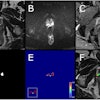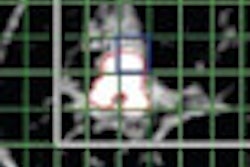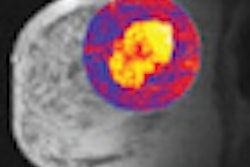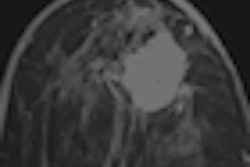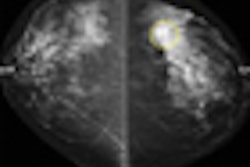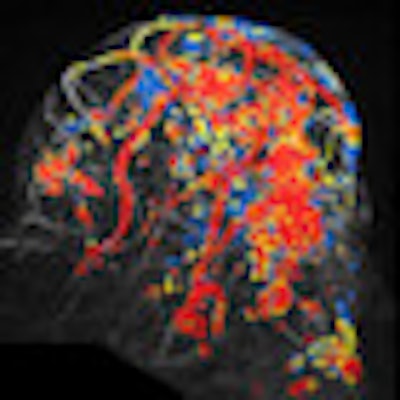
Pairing computer-aided detection (CAD) with breast MRI has little effect on the sensitivity and specificity for experienced radiologists, according to a study in European Radiology. However, residents or inexperienced radiologists may benefit from the combination.
While breast MRI has a high sensitivity, the specificity varies, which results in a high number of false positives, according to the authors. MRI also requires time for image acquisition, processing, and interpretation. Pairing CAD with MRI helps to overcome those limitations and in general helps to identify suspicious features to bring them to the attention of the radiologist.
The study researchers sought to assess the radiologists' accuracy in discriminating benign from malignant breast lesions at MRI with and without CAD in their meta-analysis (Eur Radiol, 15 March 2011).
Dr. Monique Dorrius, from the department of radiology at the University Medical Center Groningen in the Netherlands, and colleagues conducted a meta-analysis of articles and ultimately included 10. They found experienced radiologists reached comparable pooled sensitivity and specificity before and after using CAD (sensitivity without CAD: 89%, with CAD: 89%; specificity without CAD: 86%, with CAD: 82%).
For residents, however, the pooled sensitivity increased with CAD (72% to 89%). The specificity was similar (79% without CAD, 78% with CAD).
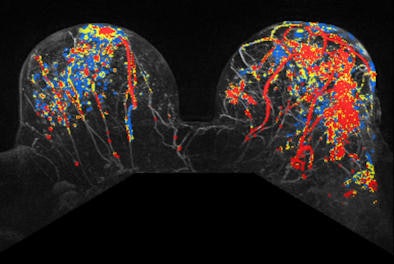 CAD can identify maximum intensity projection when paired with MRI. However, the radiologists' interpretation is still important. Image courtesy of Dr. Monique Dorrius.
CAD can identify maximum intensity projection when paired with MRI. However, the radiologists' interpretation is still important. Image courtesy of Dr. Monique Dorrius.The results are not surprising, according to Dr. Corinne Balleyguier, a radiologist at the Institut Gustave Roussy in Villejuif, France.
"Usually CAD benefits less experienced radiologists [because] senior radiologists are more confident in their own interpretation and don't trust CAD analysis so much in case of [a] discrepancy with their feeling," she said.
The radiologists at the University Medical Center Groningen still use CAD with MRI because it helps the radiologist with lesion selection, according to Dorrius.
However, "now, radiologists know that their interpretation remains essential and are aware that the enhancement pattern of CAD can be misleading," she said. "I think CAD is useful because of the automatic processing and analysis functions, but a state-of-the-art CAD system should automatically identify almost all noncalcified breast lesions suspected of malignancy at mammography. This is reflected by a very high sensitivity and negative predictive value for these noncalcified breast lesions. So, the interpretation of the experienced radiologist remains always essential."
